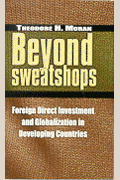This post was edited to correct the headline on the paper by Nicolas Petrosky-Nadeau and Robert Valletta.
Studies in this week’s Hutchins Roundup find past returns influence people’s investment decisions, high unemployment benefits from the CARES Act had little impact on job acceptances, and more.
Want to receive the Hutchins Roundup as an email? Sign up here to get it in your inbox every Thursday.
Past returns drive people’s investment decisions more than their forecasts of future returns
Expectations of future returns play a smaller role in investment behavior than many standard models predict. Haoyang Liu of the New York Fed and Christopher Palmer of MIT suggest that this may be because of a systematic gap between people’s stated forecasted returns and the beliefs they use to make investment decisions. Using a survey experiment in which respondents were asked to allocate a $1,000 investment between a 2% risk-free savings account and a housing fund with returns tracking local home price appreciation, the authors find that the higher are perceived past housing returns, the larger the investment in the housing fund, even after controlling for expectations of future home prices. They also find that investors who are less confident about their forecasts are more likely to rely on past experience when choosing investments. Researchers should elicit and control for perceptions of past returns to better capture the beliefs underlying investment choices, the authors conclude.
Generous unemployment benefits during the pandemic had little effect on job acceptance rates
The extra $600 a week in unemployment benefits from the CARES Act had very little impact on job finding rates for the majority of workers and only moderately reduced their incentives to search for jobs, find Nicolas Petrosky-Nadeau and Robert Valletta at the San Francisco Fed. Using a model of job acceptance and data from the Current Population Survey, the authors estimate that most unemployed workers would accept a job offer at their previous wage, even if they earned more in unemployment benefits. Specifically, weekly benefits would have had to increase by at least $250 over and above the additional $600 to deter the average worker from returning to work last spring. Only workers in the lowest paid occupations (like food services) would have considered keeping their extra $600/week in unemployment benefits over accepting a job. The authors find similarly modest effects of unemployment benefits on job acceptance using a direct empirical test that relies on differences in replacement rates across workers. “The value of a sustained job, especially in a depressed labor market, significantly outweighs the value of the temporary additional [unemployment benefit] income,” they conclude.
Parents of young children account for a negligible share of the aggregate employment deficit following the pandemic
Using data from the Current Population Survey, Jason Furman and Wilson Powell from Harvard and Melissa Schettini Kearney from the University of Maryland find that excess job loss of mothers of young children can account for just 1% of the decline in employment and 3% of the decline in labor force participation from January/February 2020 to January/February 2021. Despite school closures and persistent childcare challenges, mothers of young children did not leave the workforce at substantially higher rates than other women of the same age and education level, they find. Furthermore, mothers of young children account for only 12% of the overall workforce, limiting the potential for any excess job losses to have a large aggregate effect. Fathers of young children experienced smaller job losses relative to other comparable workers, reinforcing the conclusion that the ongoing aggregate employment deficit is not explained by challenges particular to parents of young children.
Chart of the week: Retail inventories struggle to keep up with consumer demand
Source: The Wall Street Journal
Quote of the week:
“You love to have an economy growing as fast as this one. You love to have a labor market improving the way this one has improved — unemployment way down from the 14.7% peak last spring. And I think we’ll continue to see lots of improvement in the labor market. The inflationary impulse, I think, is more intense than we were expecting. 3% core PCE inflation, how long has it been since we’ve seen that? So, I think there is some upside risk to that,” says James Bullard, President of the St. Louis Fed.
“You’ve got more reopening to occur in the second half of the year here. Some states and cities just opening up now. So, I think you could see even some upside risks to the inflation forecast. But that’s okay. We’re targeting to get inflation up above target. I think we’re going to achieve that in 2021 and 2022 and that we’re going to approach 2% inflation from the high side. I think that’ll be a good path for the U.S. economy that will help cement longer-run inflation expectations at 2%. So far so good, but we do have to be nimble here. These are big numbers.”
The Brookings Institution is committed to quality, independence, and impact.
We are supported by a diverse array of funders. In line with our values and policies, each Brookings publication represents the sole views of its author(s).











Commentary
Hutchins Roundup: Investment behavior, unemployment benefits, and more
June 24, 2021